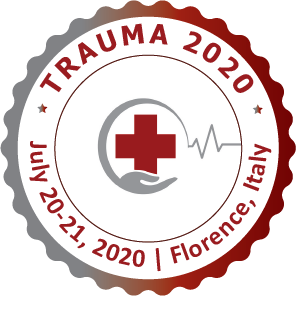
Chonlada Krutsri
Mahidol University, Thailand
Title: Traumatic blunt renal artery injury in horseshoe kidney disease with successful of embolization for treatment of active bleeding : A case report and review literature
Biography
Biography: Chonlada Krutsri
Abstract
Background : A blunt injury in pre-existing kidneys disease can be found 19% and more vulnerable than normal kidneys. A horseshoe kidney is a rare anomaly with an overall prevalence of 0.2%. This challenge to non-operative management especially in high grade injury with active bleeding injury. A surgical reconstruction and preserve of damaged horseshoe kidney is difficult due to variation of vascular anatomy. This article is report a successful of non-operative management of blunt horseshoe kidney injury with active bleeding, review outcome and complication after treatment.
Method : We reported our case and review literature from international database.
Results : A 57 year-old male, motorcycle accident, suffer from transient responsive of hypovolemic shock. A whole body computed tomography(CT) scan shows high volume of retroperitoneal hematoma, and multiple laceration of lower pole kidney with compatible to pre-existing horseshoe kidney disease with active contrast extravasation from accessory right renal artery. An embolization was performed. A transient impair of renal function occurred in 2 days after embolization and normalised in day 7. Infected hematoma occur in day 7 with successfully control by antibiotics. A previous report of blunt horseshoe kidney injury found that non-operative management has performed in 5/8 cases(62.5%) with 100% clinical success rate. A complication occurred in 75% comprise of fluid collection, infected hematoma and retroperitoneal compartment syndrome. None of the patient has impair renal function in long term follow up.
Conclusion : A pre-existing horseshoe kidneys disease are prone to injury even low velocity impact. An embolization can be a gold management due to very high clinical success rate leads to decrease surgical repair which is difficult due to variation of vascular anatomy and parenchymal pathology. A high rate of complication can occur from non-removal hematoma. If embolization is fail to stop bleeding, a surgical exploration should mandate for life saving.

